As a dairy farmer, it is vital to keep your livestock well protected against any potential harm, including any harm they might do to themselves. Any seasoned farmer will tell you that a good fence is the best way to keep your cows, sheep, and goats safer. However, farm fencing comes in a great number of types and styles. How can you choose the right fence for your dairy farm?
Choosing the right fence for your property comes down to its purpose and what you are corralling. For dairy cattle, you need fencing that is three strands high at a minimum; four and five-strand fences are strongly recommended. Fencing is expensive, and there are many different aspects to consider.
To find the perfect fence, you need to know the different types of fencing and how each one is designed to work. This information will help you limit the field and better negotiate with the installation crew. Read on for all you need to know about choosing the right fence for your dairy farm.
Choose the Right Type of Fence
Whether it is your first time farming or you've been dairy farming since you were young, you know there are so many different fences that are in use from farm to farm. While each of them looks like they may have the potential, some of them may not be suitable for your farm.
Fences are constructed with a specific purpose in mind, and because of this, what works for the horse farm might be less than secure for your goats. Every fence has its own merit. We're here to help you find the right fence, not just any fence.
Today, we're going to explore the top farm fencing options:
Barbed Wire Fence
There are a few different kinds of barbed wire fences. There is the standard style, which sees posts set about fifteen to twenty-five feet apart, connected by at most five strands of barbed wire.
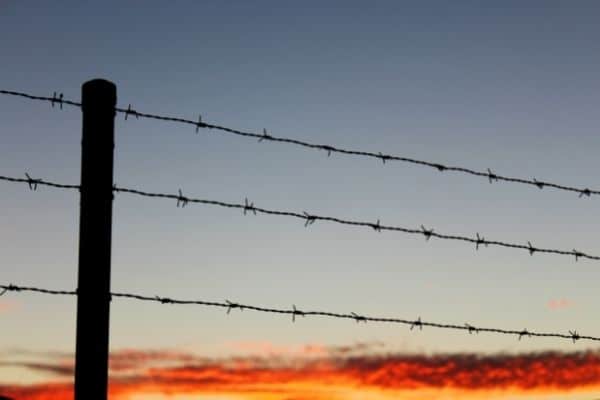
There is also another kind called a suspension fence, which uses more strands and ensures the wires are as tight as possible between the posts.
A third kind is a mix of mesh bottom and wires on the top.
This third type of fencing is especially handy if you have a combination of animals roaming about the field. It is the most commonly used cattle fencing and has the added benefit of protecting them from intruders due to the barbs themselves along the thick strands.
Cable Fences
Unlike the barbed wire fence, a cable fence lacks the added barbs. However, that does not mean that they are not an effective form of fencing. Cable fences are constructed like the suspension barbed wire fence, making taut cables run between posts to create a confined area for your livestock.
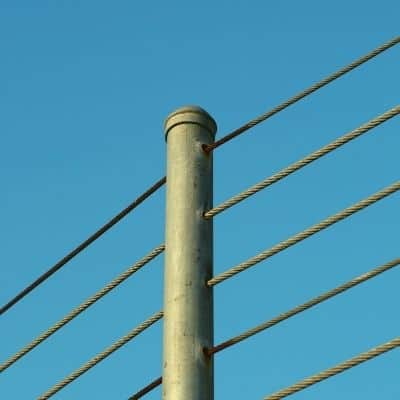
They are great due to their flexibility in construction, as you can just add more cables closer together depending on the type of animal you keep. However, their most significant drawback is their cost.
Because of the higher price-point, many dairy farmers and livestock farmers use cable fences for confinement pens and feeding areas only.
Electric Fences
Need help confining your livestock within a set space? An electric fence is a solid choice for many farmers looking for a way to deter their animals and keep them secure in a part of their farm.
It may seem unbelievable, but electric fences are:
Much like the barbed wire fence, you can combine an electric fence with another non-conductive fence to create an enclosure. With this combination, the electric wire can be run as a perimeter border close but not too close to the actual fence. This gives a signal to your animals to stay away from that area and roam the interior.
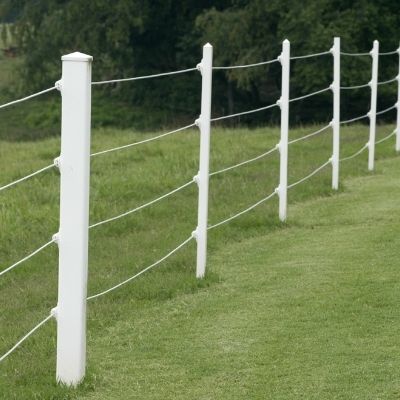
Electric fences must be installed correctly, with an appropriately sized charger to ensure that the voltage does not hurt you or your animals. Improper installation can lead to several accidents on the farmstead, which can be costly and may even impact your output when the time comes.
Check out
Best Electric Fence Chargers
Our Top Ten Recommended Electric Fence Chargers for your Dairy Farm!
High-tensile Fences
Need a fence that's easy to build and will last for a long time?
High tensile fences are the most cost-efficient fences available. Not only can you put them up quickly and easily, but they require minimal maintenance, making them a top choice for farmers who need fencing solutions and don't have time to wait.
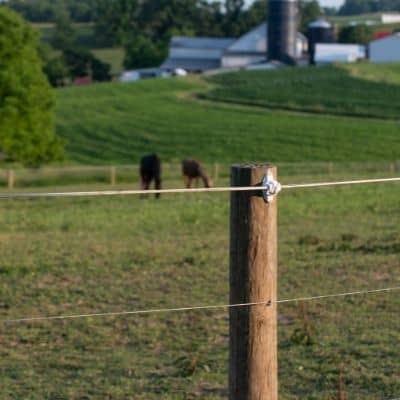
These fencing systems are built much like cable fencing by tightening the wires between posts to create tension on the line itself. As a bonus, many use electrical fences in conjunction with high-tensile fences to prevent predators from getting to their livestock and at the same time, creating an additional boundary for their kept animals.
Mesh Wire Fence
If you need a strong fence, mesh wire is the way to go. These fences excel in providing safety for livestock and are quickly becoming more popular than your standard wooden fence. Because the way mesh wire is constructed, it allows for a little give from the livestock without completely giving way.
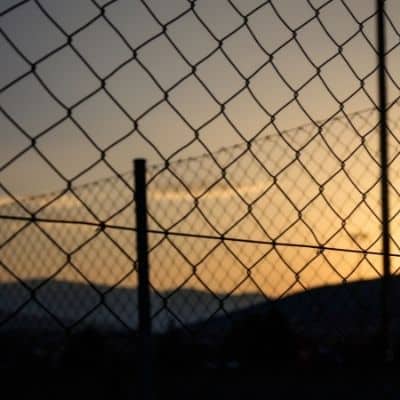
The downside is that mesh wire can get expensive for installation. Their cost is a driving factor as to why it is typically used for smaller areas such as corrals and small feeding areas where a farmer wants to seclude their livestock. However, the resiliency of this fence makes it worth consideration for a dairy farm.
Rail Fences
These types of fences are relatively basic. They have a stable post that connects to the next post up the line with two or three horizontal posts between them.
While simple but good-looking, these are usually used as a border indicator along a farm's property lines, showing where the property begins or ends.
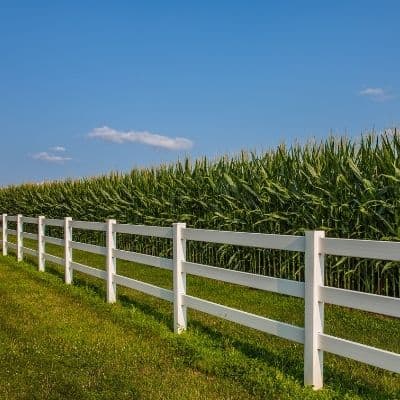
However, even after a rail fence is installed, farmers must watch their livestock closely, especially larger animals. Since these fences aren't typically very high, it's possible for animals to step over the fence. On older farms, the fence may be made of wood, but now you can find them made of PVC and vinyl to provide increased strength.
Woven Wire Fence
Do you have jumping animals on your farm, like goats?
Consider a woven wire fencing system. These fences are made up of smooth wires that are woven together to create netting between fence posts. The significant part is that they can be anywhere from twenty-six to forty-eight inches high, depending on the animals you are keeping.

These types of fencing are usually a bit higher on their price. But the fencing does last, so woven wire fencing is worth the investment.
Besides price, the other downside is that some animals will get smart enough to stretch out the fencing, inherently breaking it.
If you choose to use this type of fencing, it is crucial that you find a contractor that will install this fence right the first time to prevent issues.
Be Sure to Consider Your Livestock
Now that you have the scope of the different fencing you can pick from, it is time to think about what you will be using that fencing to protect.
Dairy farms can have several different animals that have to be cared for. Buying a general fence may keep the sheep in, but it will be too weak to prevent cows from just knocking it over.
Each animal has different types of fencing it can deal with, and many fencing systems are designed to combat issues with specific animals.
What sort of fencing considerations should you keep in mind for your livestock?
Let's break it down by animal and see what fencing may be best for them.
Cows
As a dairy farmer, you are more than likely in need of cattle fencing for your herd. Most fences are capable of handling large animals of the size of cattle.
There are minimal factors to consider for the cattle themselves, such as the height of the system as well as the type of cattle you are corralling.
The Best Fence for Corralling Your Cattle
Generally, you want a fence that is at least fifty-four inches high for keeping cattle where they need to be. This will be high enough where they don't want to try and knock it down, or at least they will have a hard time doing it.

The biggest focuses for fencing this animal will be on the cost and process. There is more space needed for handling cattle, so a fence can get expensive fast.
If you also keep a bull or two on the property, you will want reinforcement from strong, thick posts, and you'll need to use thicker wire than you use for the steer's and heifers' area.
Goats
Who doesn't love goats? They're:
Even if you aren't running a dairy farm, they can be great little critters. However, since you are running a dairy farm, you likely know their dark side, where that curiosity is backed up by bullheaded persistence and sneakiness. Goats are full of surprises and will keep you on your toes.

Goats are by far the most rambunctious of the farm animals and have a way of getting into things, especially areas that are off-limits. Without a good fence, these escape artists could easily disappear from the property without a trace.
The Best Fencing for the Goats On Your Dairy Farm
Mesh wire and woven wire fencing can be a great way to keep these guys sticking to their field. When choosing the material, it is vital to get a mesh where it won't be big enough for the goats to stick their faces through. The maximum should be 4-inch squares. You also want to make sure the fence is built high as some goats can jump!
Sheep
The great thing about sheep is that they are relatively easy to keep in one place unless you spook them. They enjoy sitting in their field, playing together when they're lambs, and eating grass. That is about it.
However, when your sheep get spooked, they can run and charge through loose fencing pretty easily.

The biggest concern of any shepherd or farmer is predators getting to their flock. Depending on your area, this can be anything from foxes to mountain lions. With such a diverse field of potential threats, you may start to think there is no way to keep your sheep safe with just a mere fencing system.
The Best Choice of Fencing for Sheep
Consider combining a standard fencing system with an electric fence or barbed wire. More sheep farmers lean towards the electric fence to prevent barbs from getting entangled in a sheep's wool.
By choosing to use a combination system, your fence will keep the sheep in, and the electric shock on the other side will keep predators away.
Check Our Complete Guide on UTV and ATV for Dairy Farms
Plan Out Your Farm Fence
There is still more to go before you get your fence installed. Now that you have a rough idea of what kind of fence you will need and how it can benefit your livestock, it is time to consider few other factors that may impact what type of fence you really need and how much it will cost you.
Though you have limited the field of fencing to one or two that might suit you best, the fact of the matter is that livestock alone cannot be the only determining reason for choosing a certain fencing system.
Consider the following factors to make your final choice when it comes to choosing your fencing system.
Planning Your Fence Layout for Complicated Factors
As with any building project, you need a plan before you can set it into motion. Fencing can be used not only for keeping livestock in or showing the border of your property but also to make certain dairy farm activities easier.
It is always helpful to plan out the entirety of your fence line(s), like with a blueprint, before you get started. Note your property line and take a walk on the perimeter.
If you can mark things off ahead of time, do so. This will make it easier for your fencing contractor to get started or, if you are building your fence yourself, allow you to get the ball rolling as soon as you want.
Be sure to keep your drawn-out plan, including any internal fencing structures you want to add to your field handy so that you can find it with ease.
Should Your Fencing Be Permanent or Temporary?
Many dairy farmers immediately shoot for permanent fencing to ensure they get the most stable systems for their herds. However, take the time to consider if a permanent fence is really what you need.
Remember, permanent means lasting or installed with the goal of not changing it. There's little to no flexibility to adapt or modify your fence if your needs change over time.
Temporary fencing is good for you as a dairy farmer who:
Permanent fencing is beneficial on a dairy farm for these reasons:
Are There Fencing Laws?
We hear you: fencing laws? Who comes up with this stuff?
It is true that most state and local governments actually have regulations when it comes to fencing on one's property for both homeowners and farmers alike. It may be unbelievable; however, they do this to safeguard you and your livestock from potential issues.
An example of this is Texas, home of cattle ranches and horse stables, where they have an entire section of law dedicated to the responsibility of landowners for fence building and maintenance. Texas A&M, an agricultural college within the state, summarized these for landowners to make the law easier to understand.
How can you protect yourself against the law when it comes to your fencing
A good rule of thumb is to get an accurate survey of your property before starting. This ensures a neutral third party will lay out the extent of your land, its borders, and more. If neighboring landowners have concerns, you can have a neighborly discussion over coffee about this document, as it will show them the exact perimeter that you are permitted to build on.
Tips for Your Dairy Farm Fence
With all this in mind, you are on the road to having a great dairy farm fencing system that will keep your livestock safe and even help you with your daily tasks.
You are ready to get your materials and start building the fence you need to keep your animals happy and predators away. Now's the time to either call a contractor or start collecting what you need.
There are, of course, a few tips that will help you during your fencing project. You want to make sure your fencing system lasts as long as you need it to, and these tips will help you build a fencing system you can rely upon.
check out
Our Buyers Guides
Our top picks for your Dairy Farming Needs
Get the Best Materials for Your Needs
After reading this entire article, you are already on this path. However, it bears repeating: make sure your fencing is the best one for your dairy farm. Consider:
These will help you choose the best fencing system to install.
Another thing to consider is how the local merchants are stocking the material in your area. For sellers, higher demand can lead to higher pricing, which means a bigger impact on your wallet.
That doesn't mean you should change your game plan when there is a lower stock of the fence you want.
Just be wary of the market and find the best deal without sacrificing your needs.
Make Sure Your Bracing Is Strong
A key part of dairy farm fencing is bracing. It can be a lot of work to get the bracing just right, but you will have a stronger fence for it once it is done. If a brace is not done properly, you can have the best materials in the world, but your fence can still fall apart.
That makes bracing one of the essential parts of your fencing system.
The most common type of fence bracing is the H brace, where you have a longer post horizontally connecting between two fence posts. Usually, this brace will be between the last post and a corner post towards the end of your fencing system.
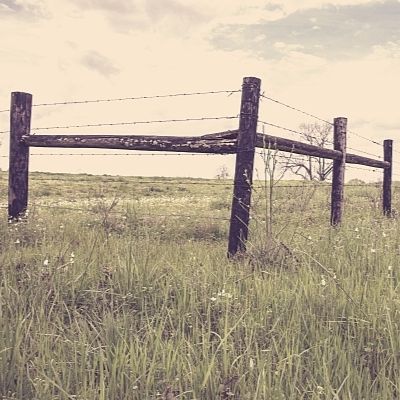
Here is how to build an H-Brace:
Consider Round Posts Instead of Square
Square posts are fine. However, they have a lot of maintenance concerns. Rot and damage can affect the posts, allowing the wood to soften and eventually give.
Round posts, on the other hand, are literally in the shape of a tree and have their rings within the wood still. This is important because the rings in a tree actually are a part of its strength. Round posts will be more resistant to wear.
Make Sure You Have Enough Posts for Proper Spacing
On top of what we just discussed, making sure your posts have the right amount of space between them is critical. If you don't have enough posts, the shifting nature of land can weaken your fence, reducing tension on the fencing, allowing it to fall apart. Anywhere you notice a lift to the land or a dip to the ground, be sure you put a post there.
Be Sure Any Staples You Use On The Fence Are Tight
When using staples, the usual thought is that if it is close enough that the wire doesn't wiggle, it is okay.
However, you want to make sure your wires have high tension on them and that the staples themselves are all the way down against the post.
Not only will it make the fencing installation go smoother, but it will make your fencing system more robust and long-lasting.
Quality Fencing for Your Dairy Farm
Your cows, sheep, and goats are the core of your dairy farm. Keeping them safe from predators and potential harm is simple when you have the right fencing system for your property. While there are many to choose from, knowing what areas concern you most and the needs of your animals can be a great way to find the best choice.
Keep in mind that you can always combine one kind of fence with another to create even greater protection against unwanted harm. When it comes down to it, the best fence for your dairy farm is the one that keeps your livestock safe and is within your budget.
Sources:
Fence Systems for Grazing Dairy Cattle – DAIReXNET
Choose the Right Fence for your Goat (tractorsupply.com)
Five-Strands-A-Landowners-Guide-to-Fence-Law-in-Texas.pdf (agrilife.org)
